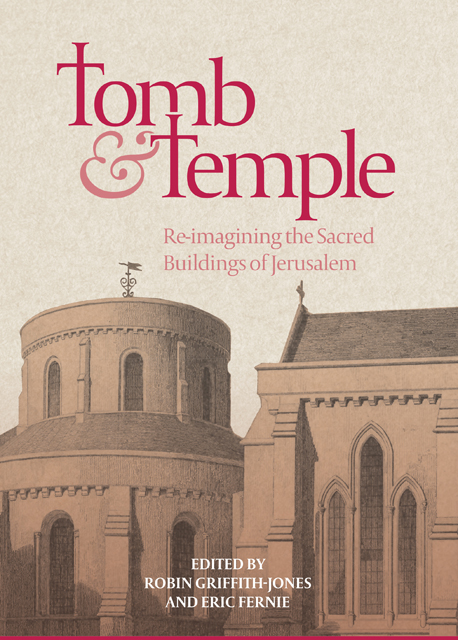Book contents
- Frontmatter
- Contents
- Illustrations
- Preface
- Contributors
- Abbreviations
- Editors’ Note
- Introduction
- Part I Re-presenting Jerusalem
- Part II The Church of the Holy Sepulchre
- Part III The Noble Sanctuary / The Temple Mount
- Part IV The Orthodox Churches
- Part V Round Churches in the West
- Appendix: The Knights’ Effigies: Newly Discovered Drawings by John Guillim, c. 1610
- Epilogue
- Index
- Already Published
7 - Spiral Columns and the Temple of Solomon
Published online by Cambridge University Press: 17 January 2023
- Frontmatter
- Contents
- Illustrations
- Preface
- Contributors
- Abbreviations
- Editors’ Note
- Introduction
- Part I Re-presenting Jerusalem
- Part II The Church of the Holy Sepulchre
- Part III The Noble Sanctuary / The Temple Mount
- Part IV The Orthodox Churches
- Part V Round Churches in the West
- Appendix: The Knights’ Effigies: Newly Discovered Drawings by John Guillim, c. 1610
- Epilogue
- Index
- Already Published
Summary
Spiral columns in Christian buildings are often, even routinely, referred to as Solomonic. The evidence in favour of this reading is extensive, as is illustrated by a list of examples going back in time from the sixteenth century, as follows:
a) Raphael’s cartoon of Peter healing a man in the porch of the Temple (Acts 3, 1–11), of 1515 to 1520.
b) Jean Fouquet’s illumination of Pompei entering the Temple, in a manuscript of 1475.
c) The column in St Peter’s known as the colonna santa, identified between 1362 and 1378 as one against which Christ lent while preaching in the Temple [Fig. 7.1].
d) The Cappella Palatina in Palermo, of the 1140s: two spiral columns support the west side of the domed bay, while Solomon is represented on the west side of the dome and on the soffit of the west arch, that is, the one supported by the spiral columns [Fig. 7.2].
e) Two columns in San Carlo a Cave in Lazio, dated 1090 to 1100 by the style of their carvings, with sixteenth-century inscriptions on their plinths saying marmorae columnae and Salomonici templi.
f) Half-columns from the synagogue at Capharnaum of the third century or the fifth, reconstructed as flanking windows on the side of the building facing Jerusalem [Fig. 7.3].
Examined in detail, however, the picture is less clear. There is no doubt about the intended symbolism of the Raphael cartoon, the Fouquet miniature and the late-fourteenth-century identification of the colonna santa, but Walter Cahn concluded that the colonna is the earliest documentary reference associating spiral columns with the Temple. The sixteenth-century date of the inscriptions on the San Carlo a Cave columns places a question mark over their identification as Solomonic around 1100, if it does not remove them from consideration completely. The half-columns at Capharnaum are a distinct possibility, though it could be argued that they were purely decorative. If a question mark is allowed over the Capharnaum shafts, this leaves Palermo as the only convincing example before the colonna santa. It is possible that the spiral columns which occur frequently in twelfth- and thirteenth-century cloisters in Rome were intended as a reference to the portico of Solomon, but it is also worth noting the complete absence of spiral columns from the fourteenth- and fifteenth-century Italian paintings of the Temple discussed in David Ekserdjian’s chapter in this volume.
- Type
- Chapter
- Information
- Tomb and TempleRe-imagining the Sacred Buildings of Jerusalem, pp. 159 - 163Publisher: Boydell & BrewerPrint publication year: 2018

